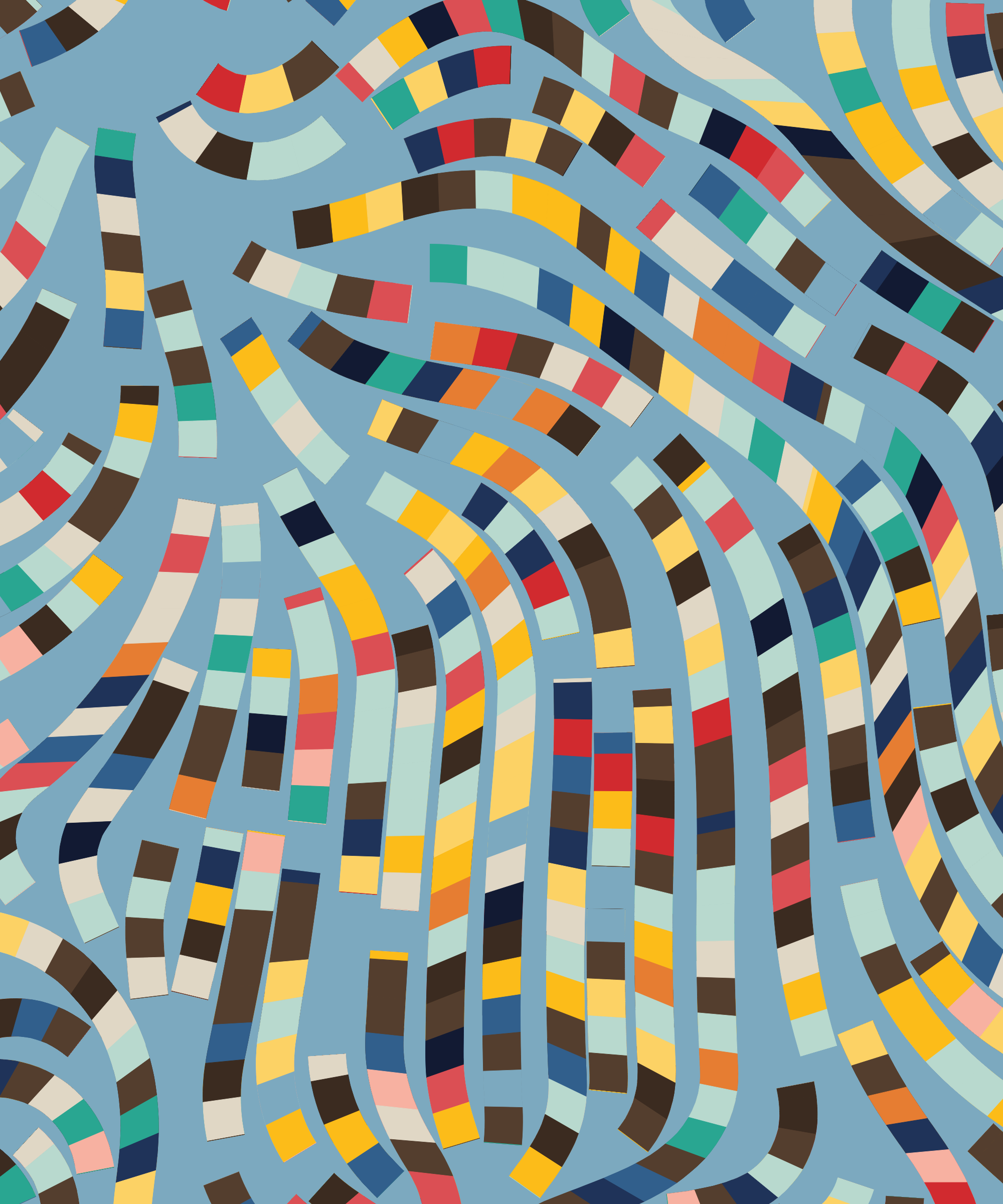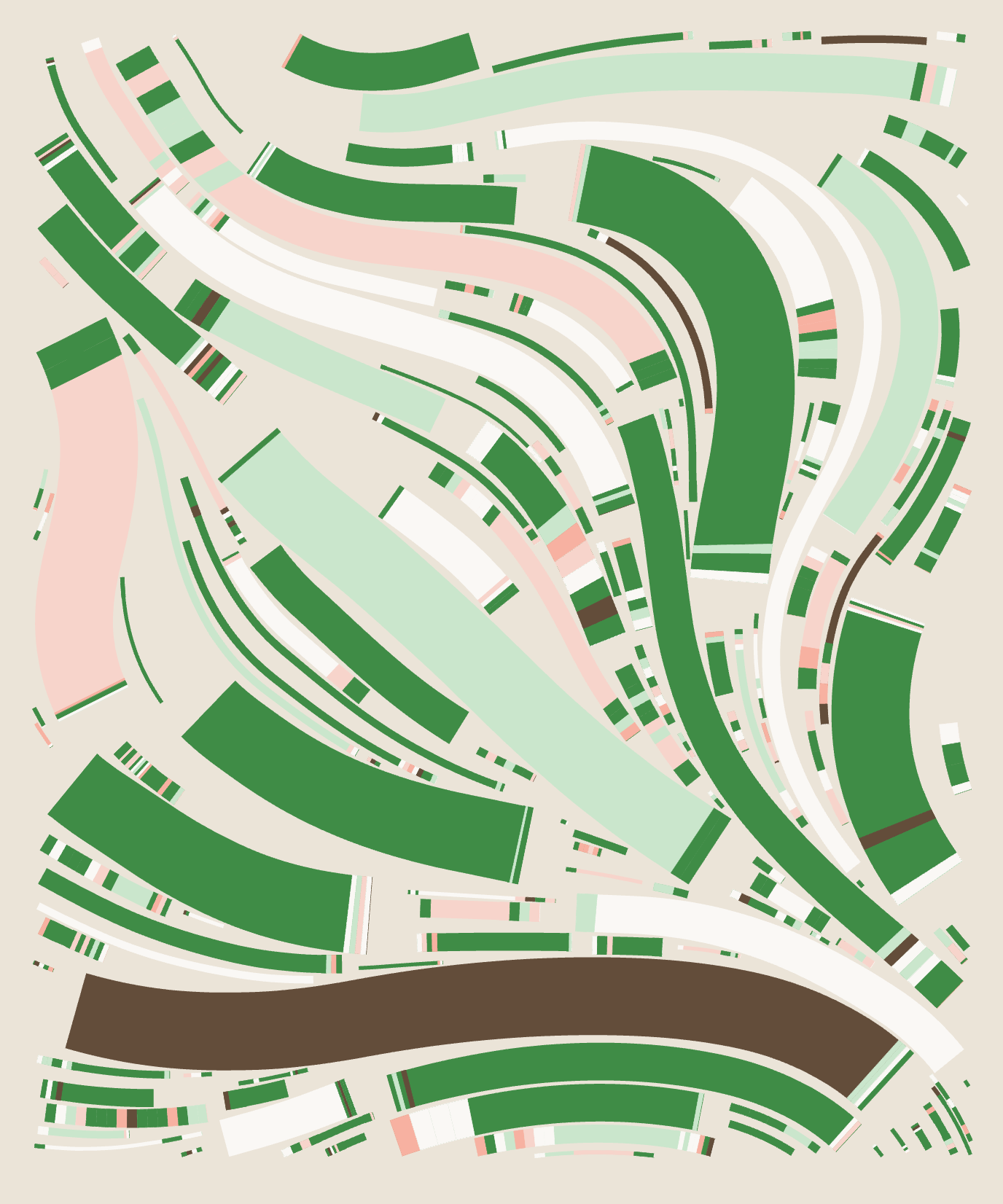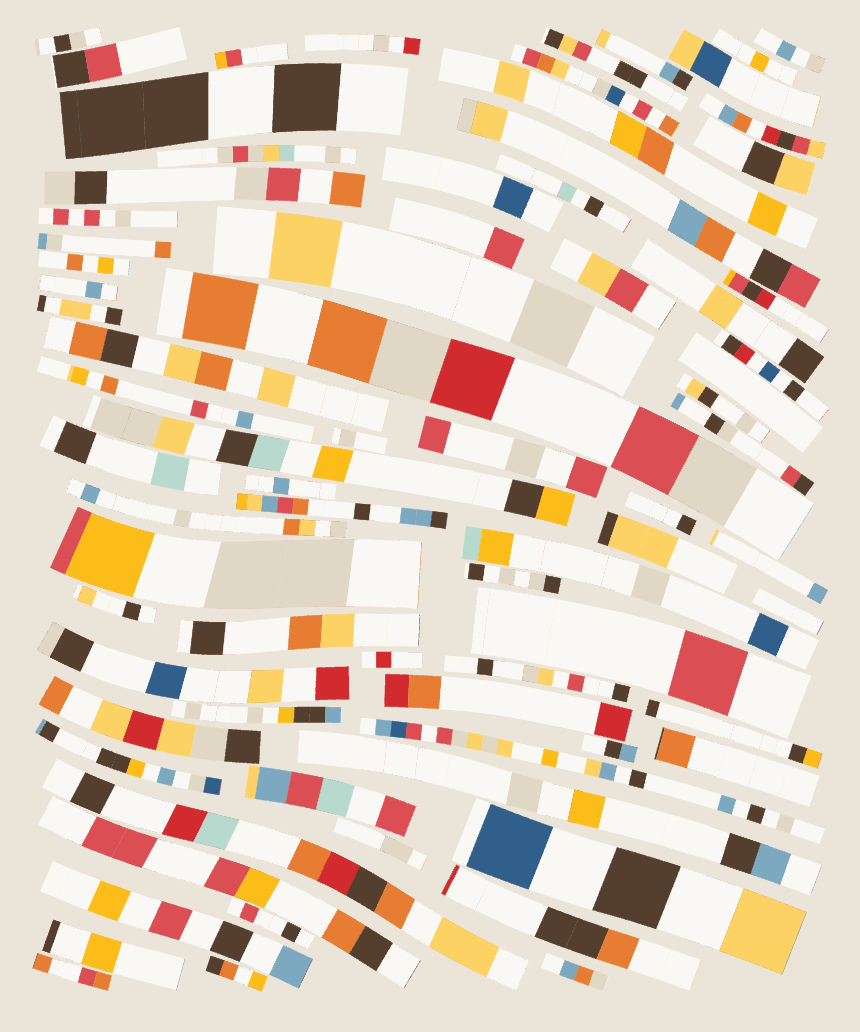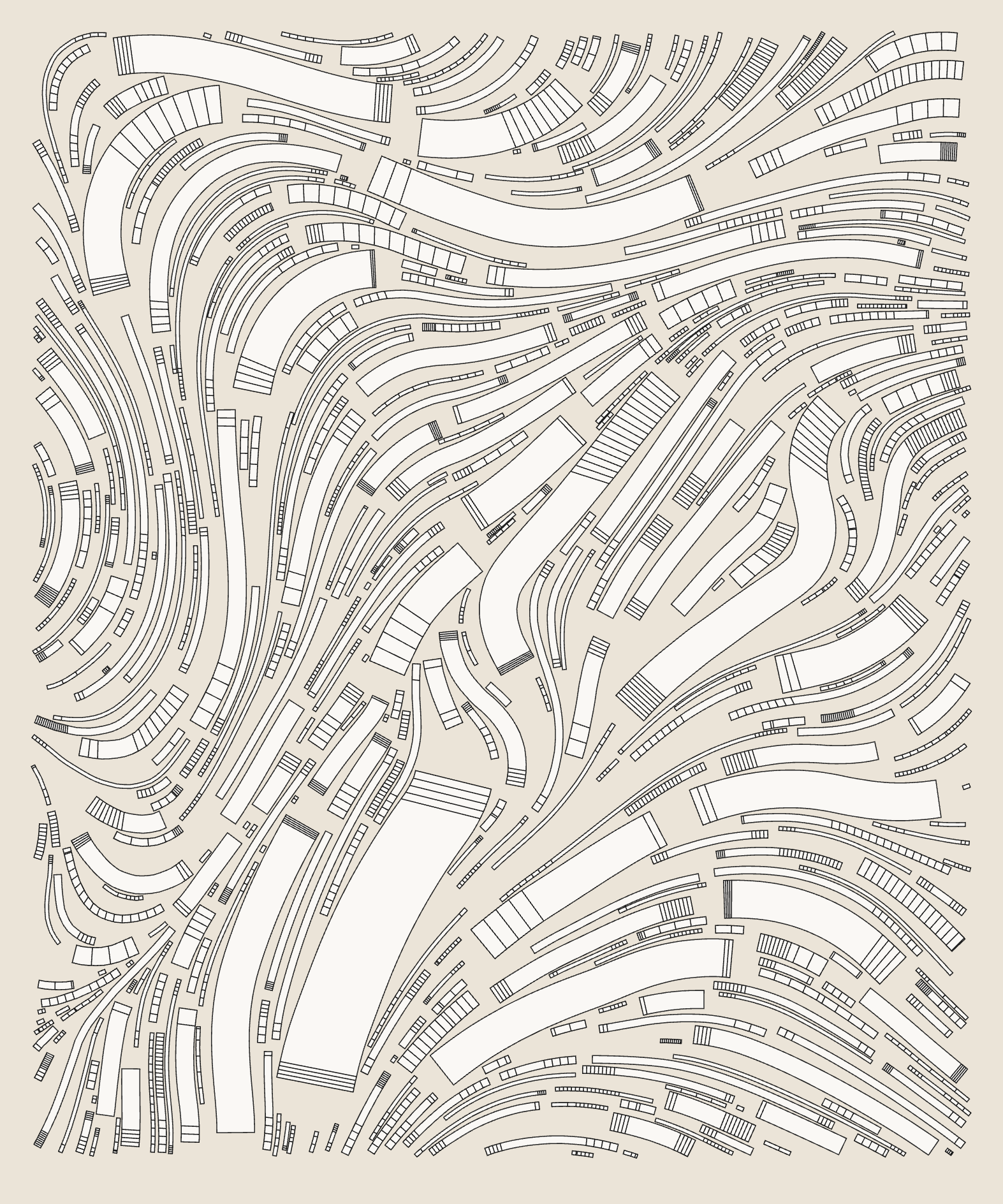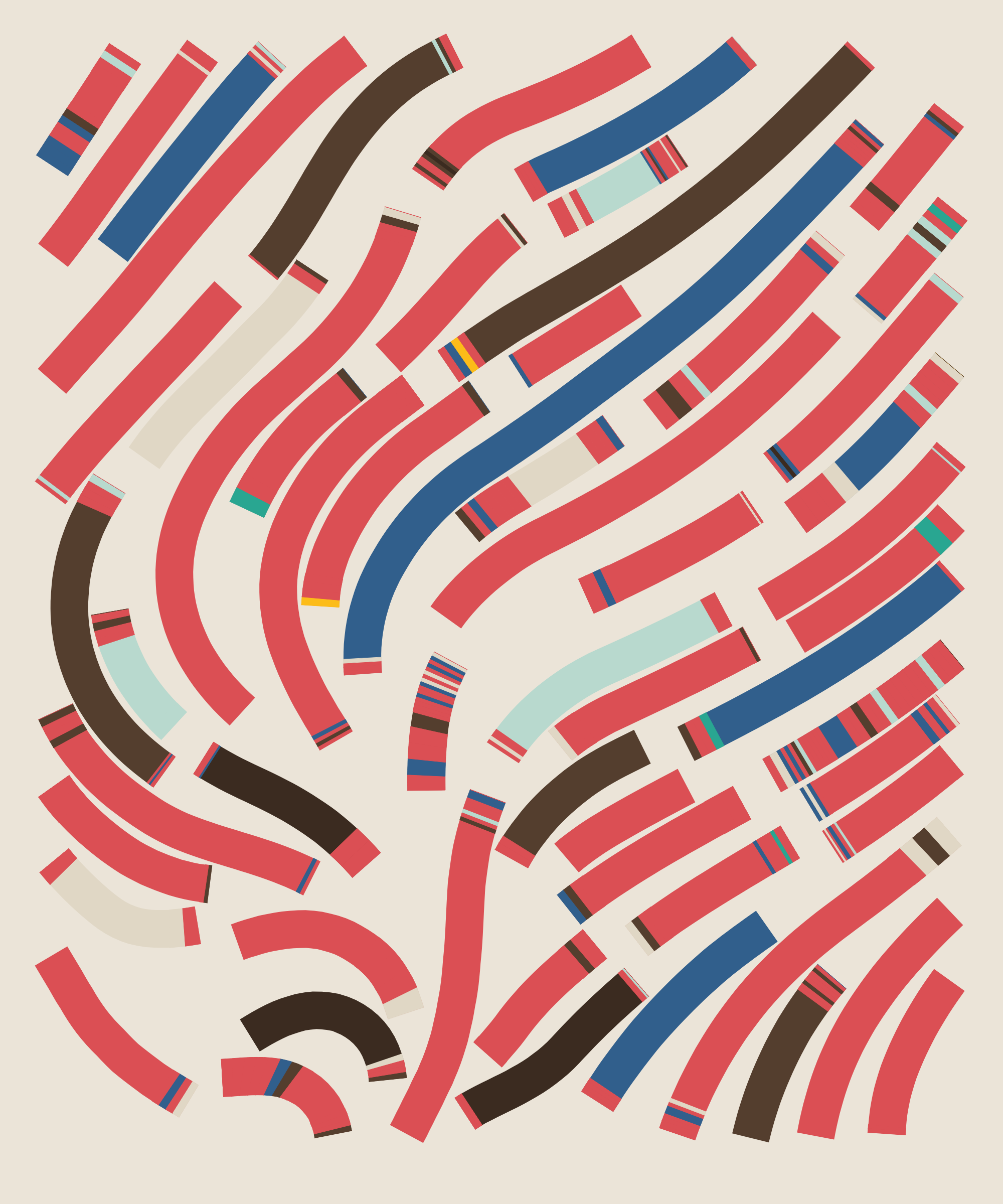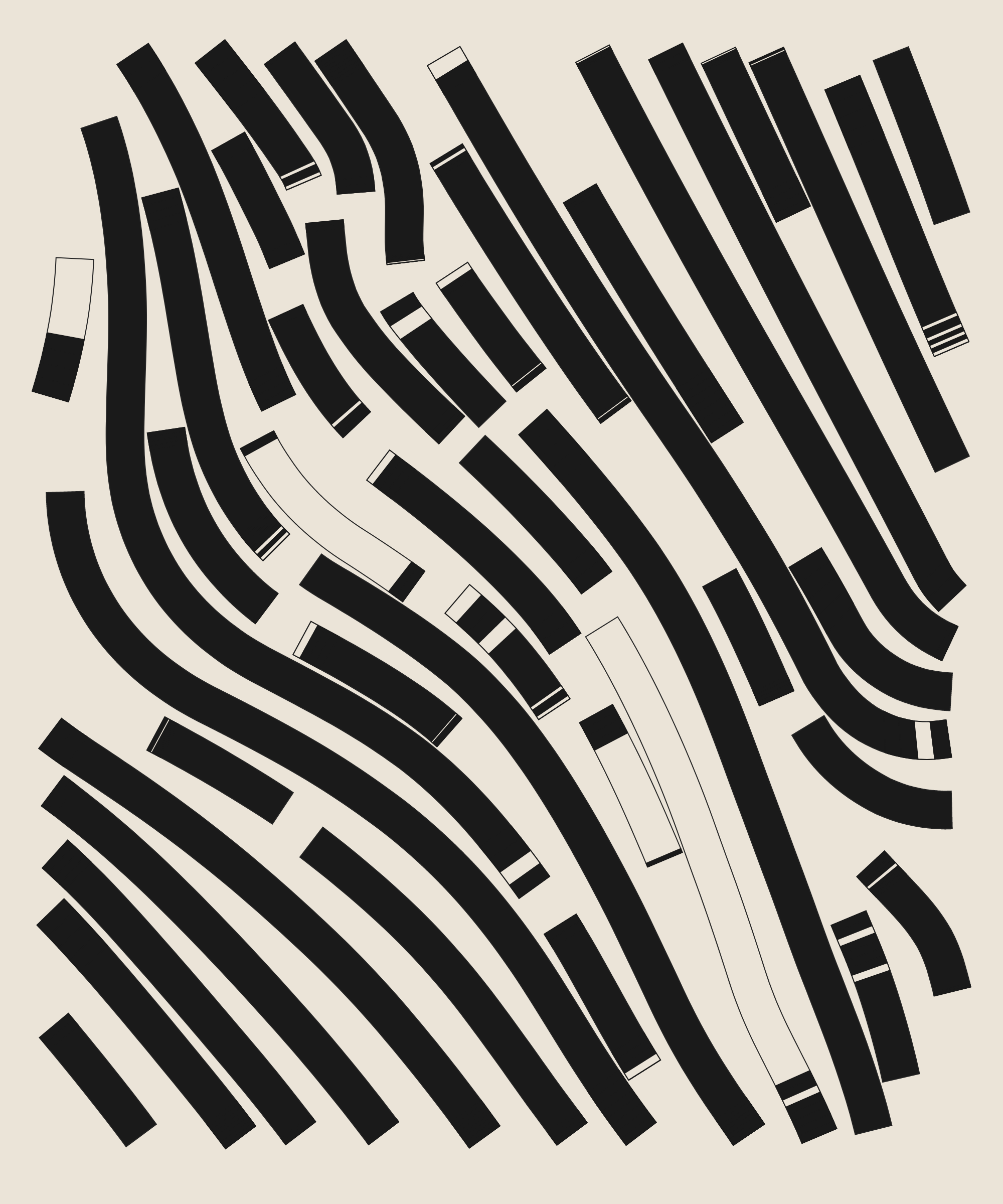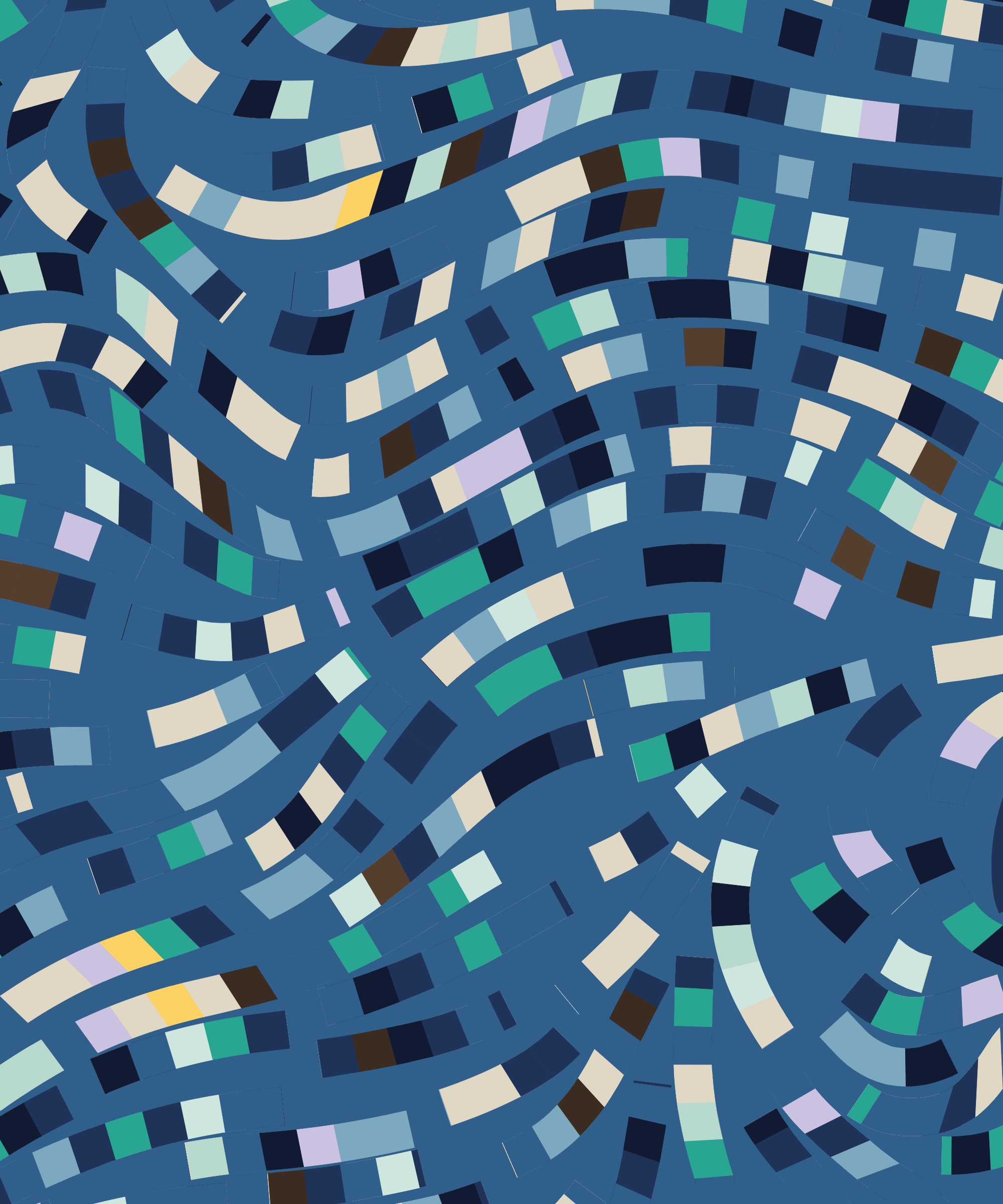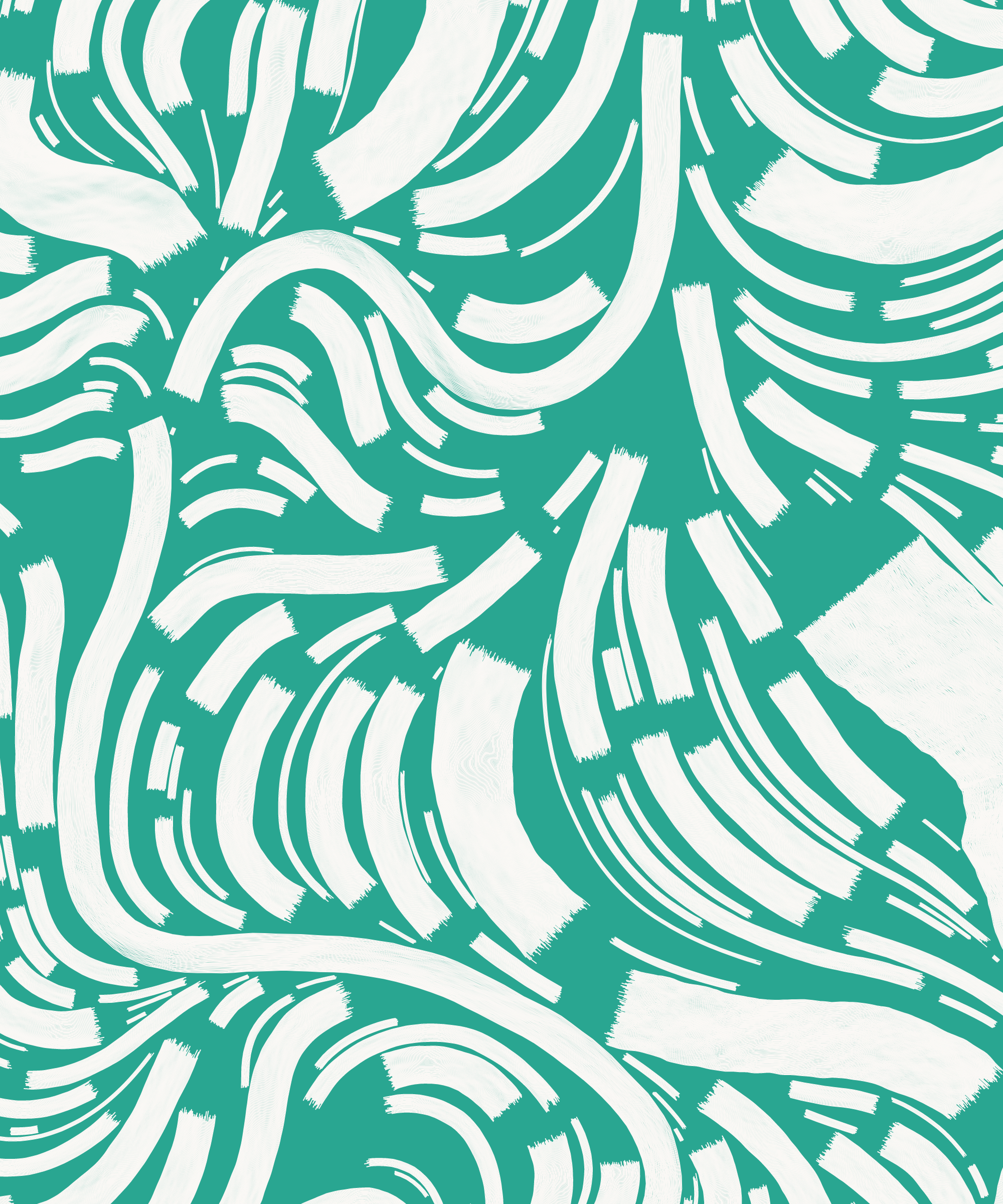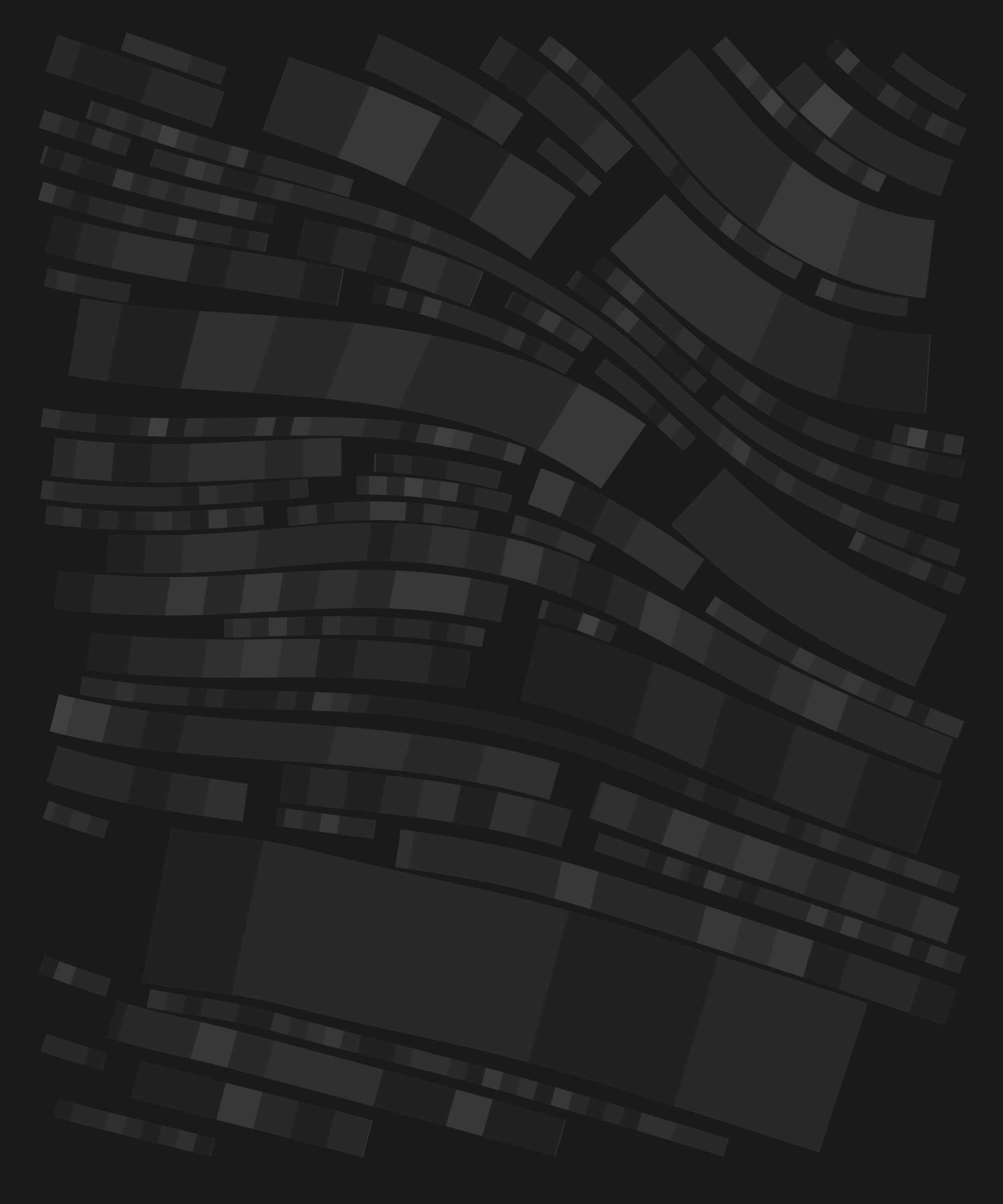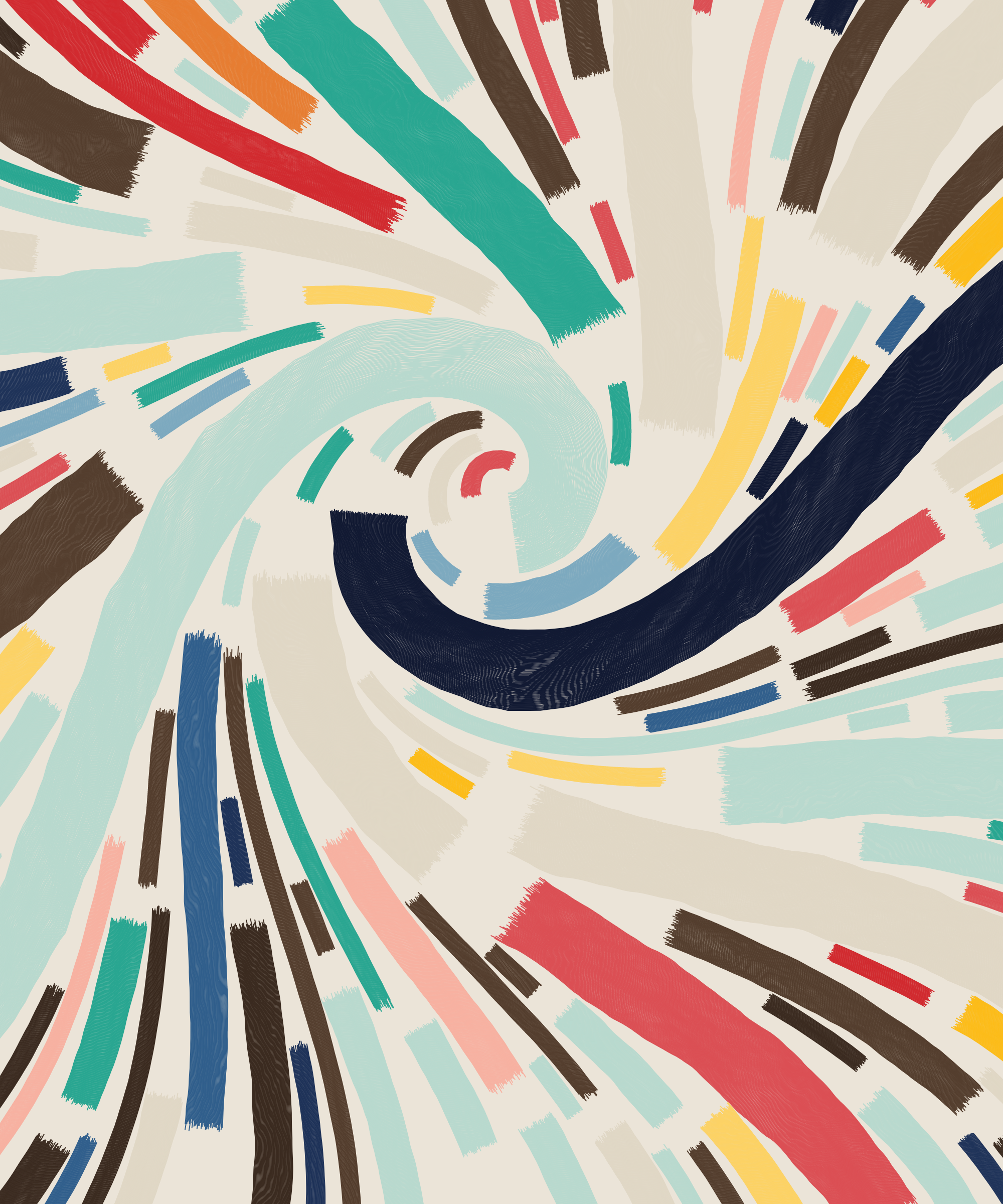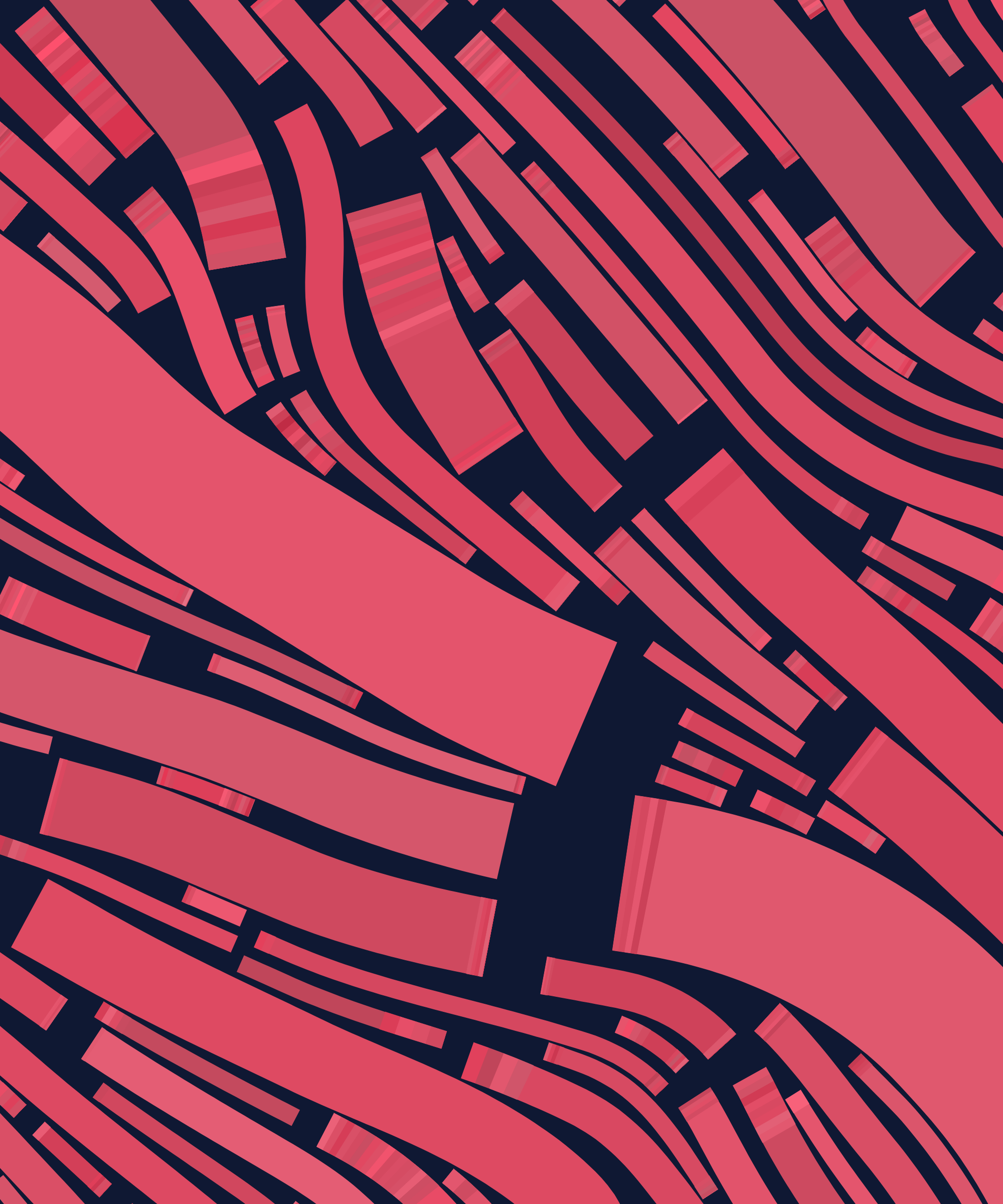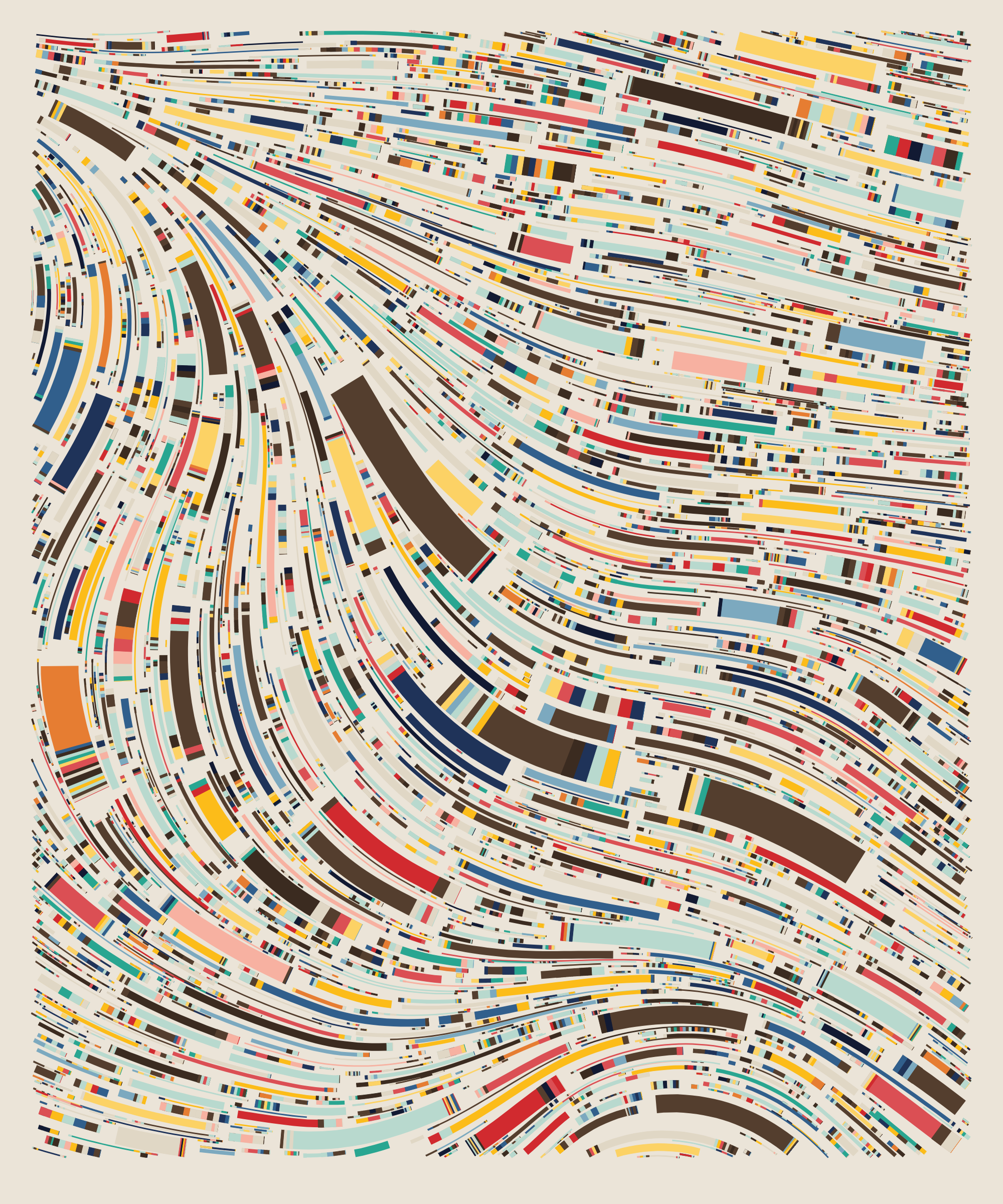
Fidenza #545
On-chain algorithm, NFT, and Ethereum blockchain, 2021
Private collection
Fidenza, a series of 999 unique works by Tyler Hobbs, explores the fluidity of form and color. Fidenza is based on a flow field algorithm, a mathematical system that is used to simulate natural motion. These algorithms are used in fluid dynamics (to model airflow and water currents), video games (to create realistic smoke, fire, and crowd movements), and animation (for effects like the movement of hair or fur). Hobbs adapted flow fields to guide the placement of curved lines and shapes to create dynamic, organic compositions where each line flows smoothly across the canvas.
Hobbs adjusted variables like line density, curvature, spacing, and color palettes, ensuring that each generated output felt distinct yet cohesive with the series. This long-form generative art requires the artist to perfect an algorithm that can deliver high variability, unity, and consistent quality without their intervention.
A step-by-step set of instructions or rules for solving a problem or completing a task. A recipe is an algorithm, as is a computer program.
A term coined by artist Tyler Hobbs to describe a new style of generative art associated withthe blockchain. In long-form generative art, the artist typically encodes their algorithm directly onto the blockchain and the work is generated at the time of minting (the moment when it is collected). This means that neither the artist nor the collector knows what the work will look like in advance. To achieve this, the artist must fine-tune an algorithm capable of producing hundreds or thousands of iterations that are visually distinct from one another yet maintain a collective coherence and quality.
